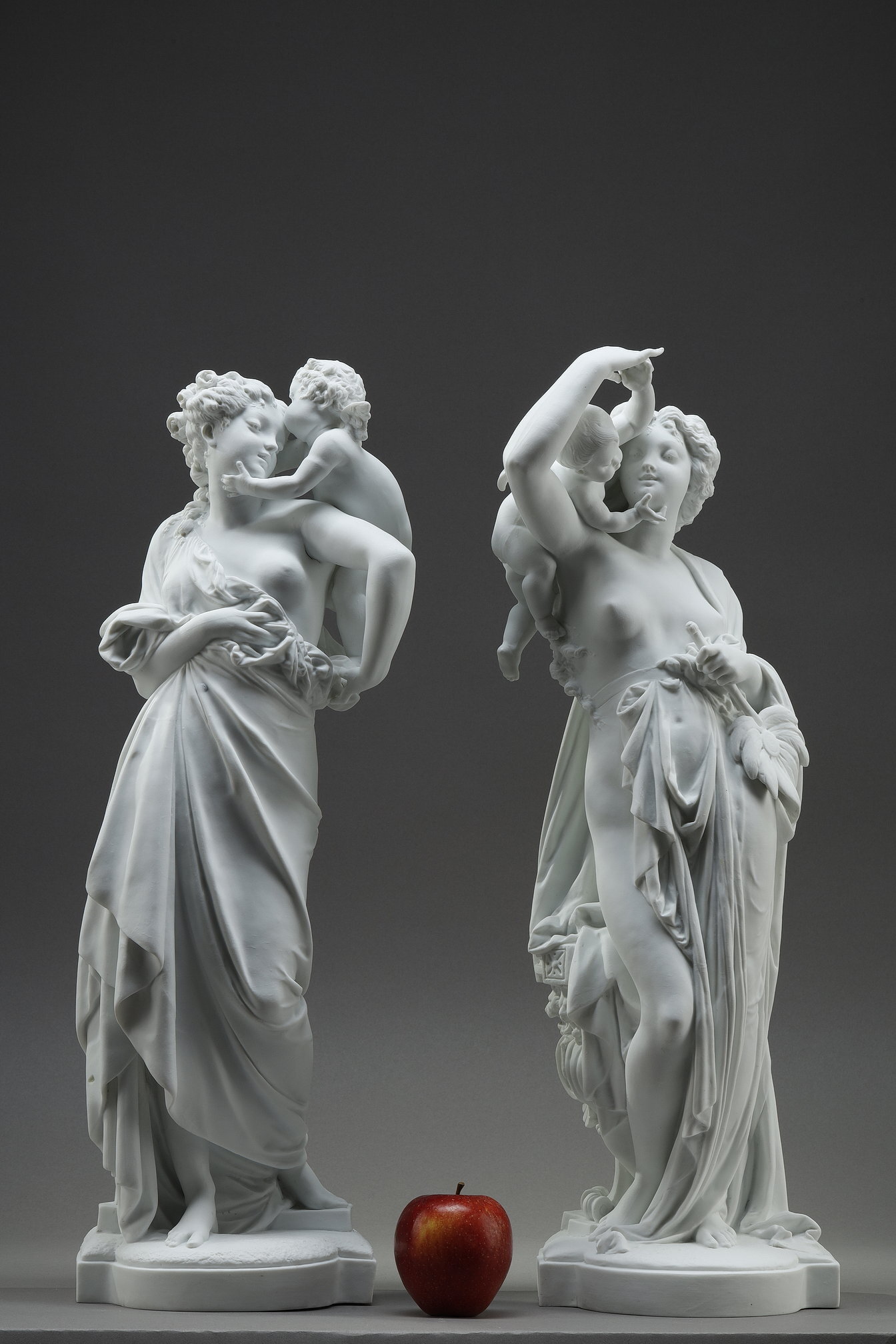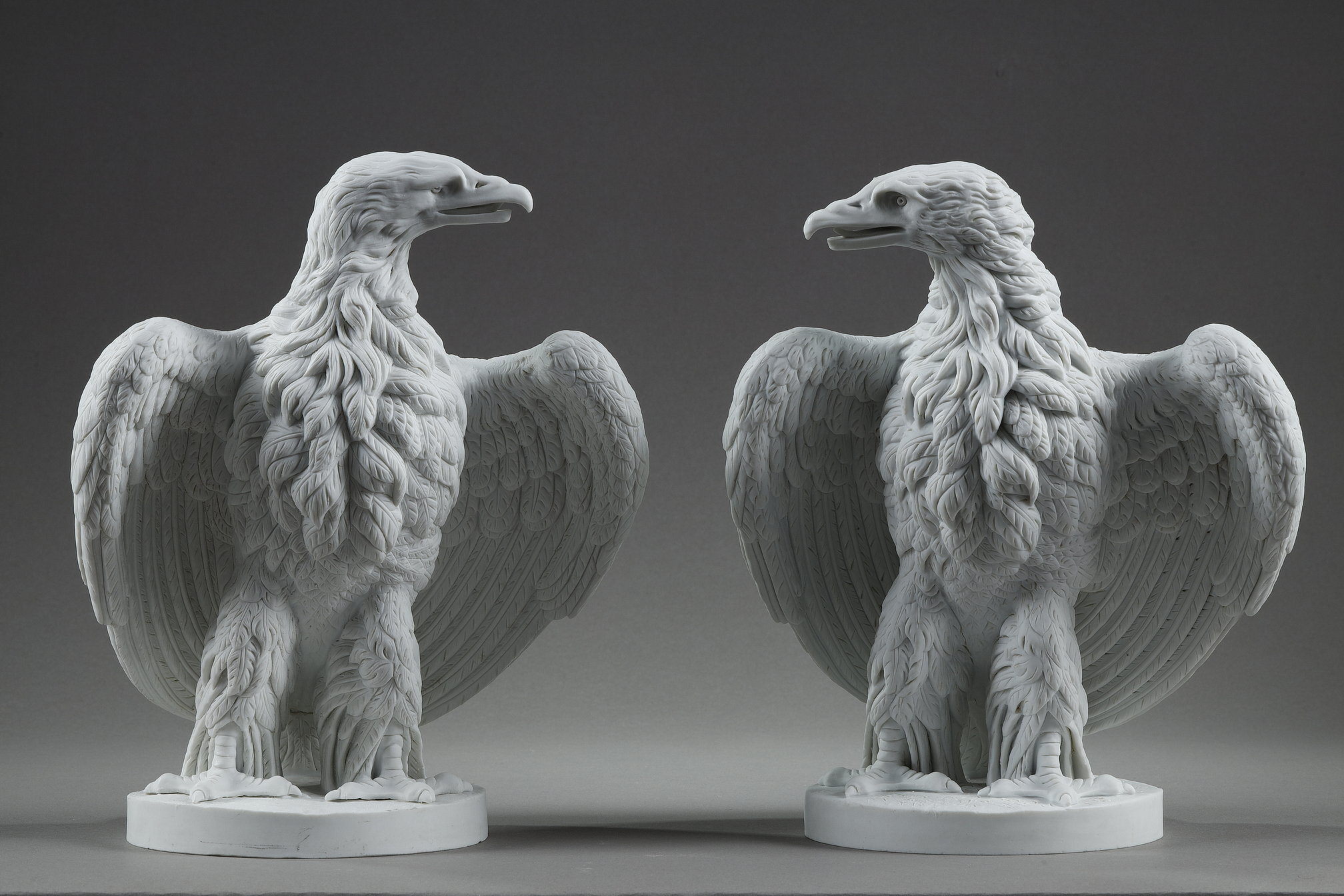How are porcelain cookies made?
23.06.22
In our previous article, we explored the rich history biscuit porcelain. This time, let's turn to the techniques used to create these exceptional objects.
Before you can create an object, you need the right materials. Porcelain paste is mostly 70% kaolin , which gives it its whiteness, to which feldspar is added to lower the melting temperature and quartz for translucency. In the 18th century, this was an experimental recipe, somewhat akin to a cooking recipe. Today, the mills that prepare the pastes follow a formula close to that established by Alexandre Brongniart, director of the factory in the 19th century. Minerals are ground under granite millstones to the size of rice grains. The result is then mixed with an equivalent quantity of water and fed into a new cylindrical mill filled with sea pebbles. This must run for between 15 and 20 hours.
The result is what we call slip. It is placed in a holding tank which is regularly stirred to prevent sedimentation. There are then processes of verification of the paste. It is passed through a wire mesh sieve with 0.06mm holes. What remains in the sieve, the reject, should not exceed 2% of the production. If less is recovered, there is a risk of the pulp collapsing during the cooking process, while if more is recovered, it means that the grinding is insufficient. We also make sure that there is no iron in the dough by using a magnet. Indeed, during the firing process, iron gives brown spots that spoil about 3% of the pieces produced. In most cases, despite all efforts, the presence of iron can only be determined after firing.
For the model, a renowned sculptor is often called upon. This was the case with Etienne Maurice Falconet in 1754, sculptor of the Academy of Painting and Sculpture. This brought fame to the workshops and inspired talent to work with a master. Nowadays, manufacturers often collaborate with contemporary artists to create exceptional pieces and demonstrate innovation despite an old technique. However, as porcelain paste is not very plastic, it cannot be sculpted. It dries out quickly, which leads to numerous cracks and deformations. The sculptor must therefore make a model which will be used to make moulds. The model is generally 15% larger than the final piece to anticipate the successive withdrawals. This initial sculpture is delivered in raw clay, as it will be cut into different pieces to make moulds.
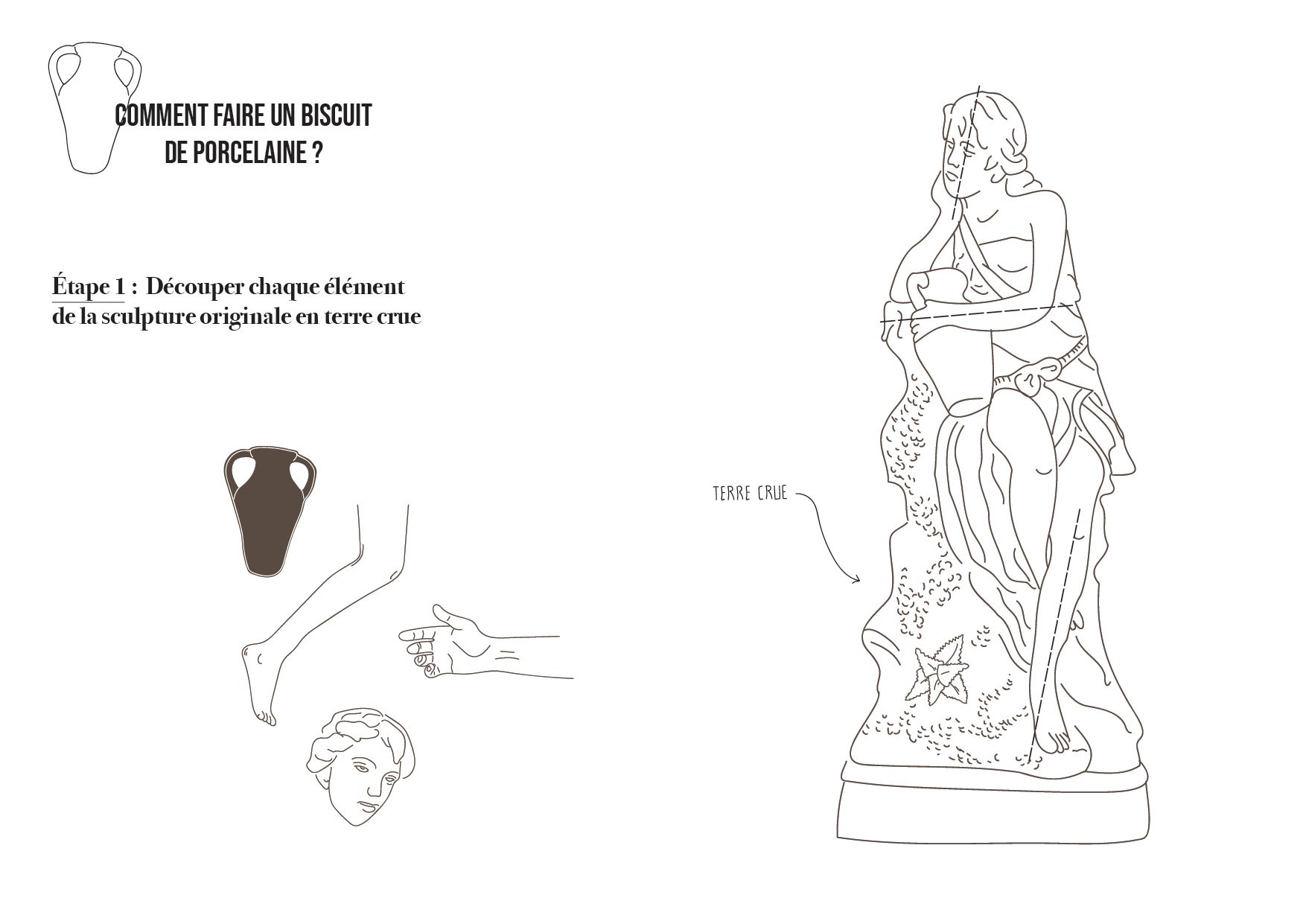
An impression of the different parts will be taken in order to create a first round of molds. For a bisque, between 10 and 80 moulds are made depending on the complexity of the model. This allows to take all the details of the figures. What you need to understand is that the craftsman will make two series of moulds (or round of moulds) to produce the work: the plaster moulds and the paste moulds.
The plaster moulds will be used to recreate the plaster work that will serve as a model for the moulder-repairer. In order to facilitate removal from the mould, the model is coated with a thin layer of lubricating soap. The powdered plaster is then sprinkled into a container with water. This is spooned around the model and then polished with a blade and fine sandpaper. The whole thing is soaped and dried. The first mould have been made. All the pieces obtained are retouched to give the fineness of the original sculpture. The seams, which are the lines at the joints of the two pieces of the mold, are removed.
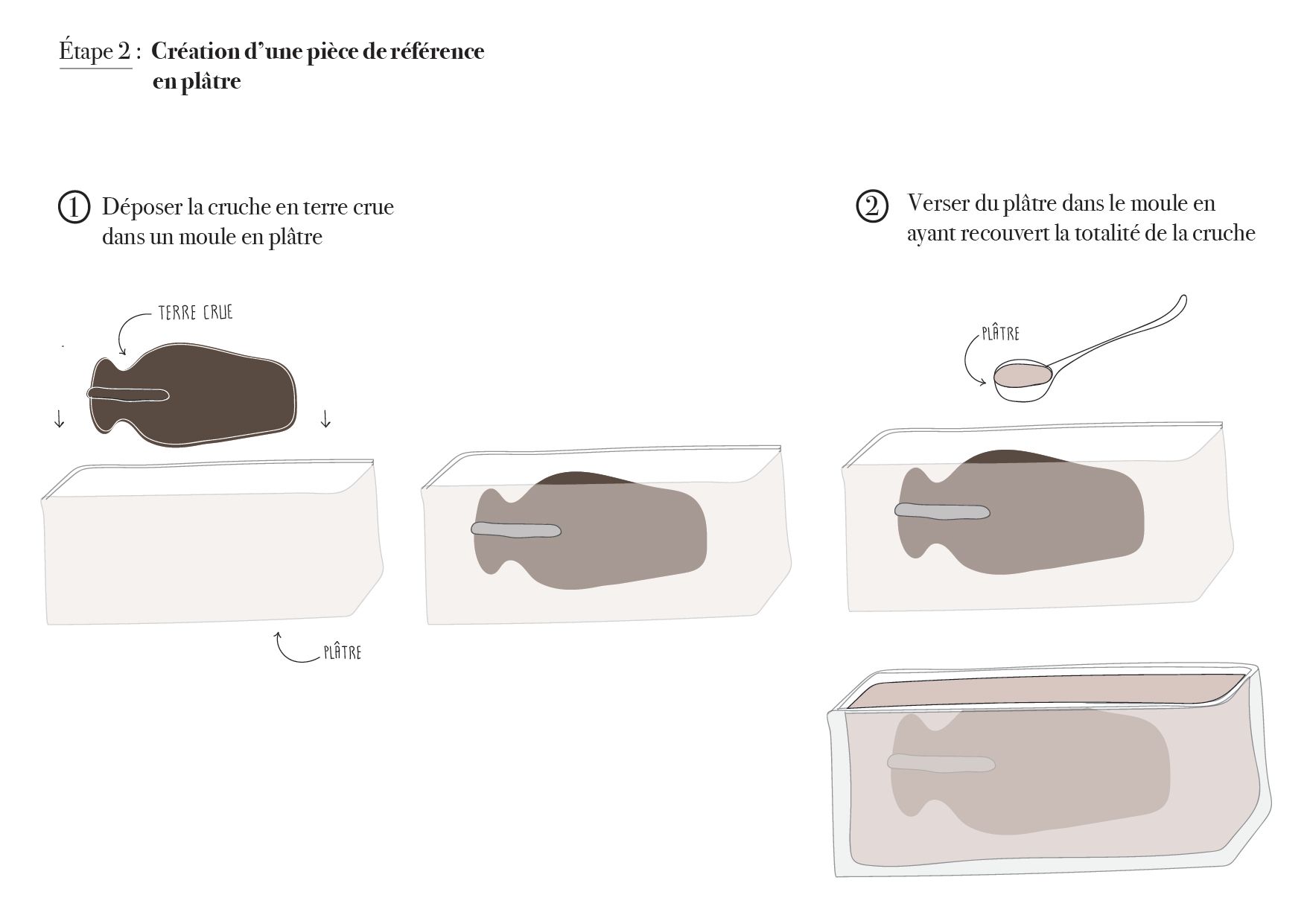
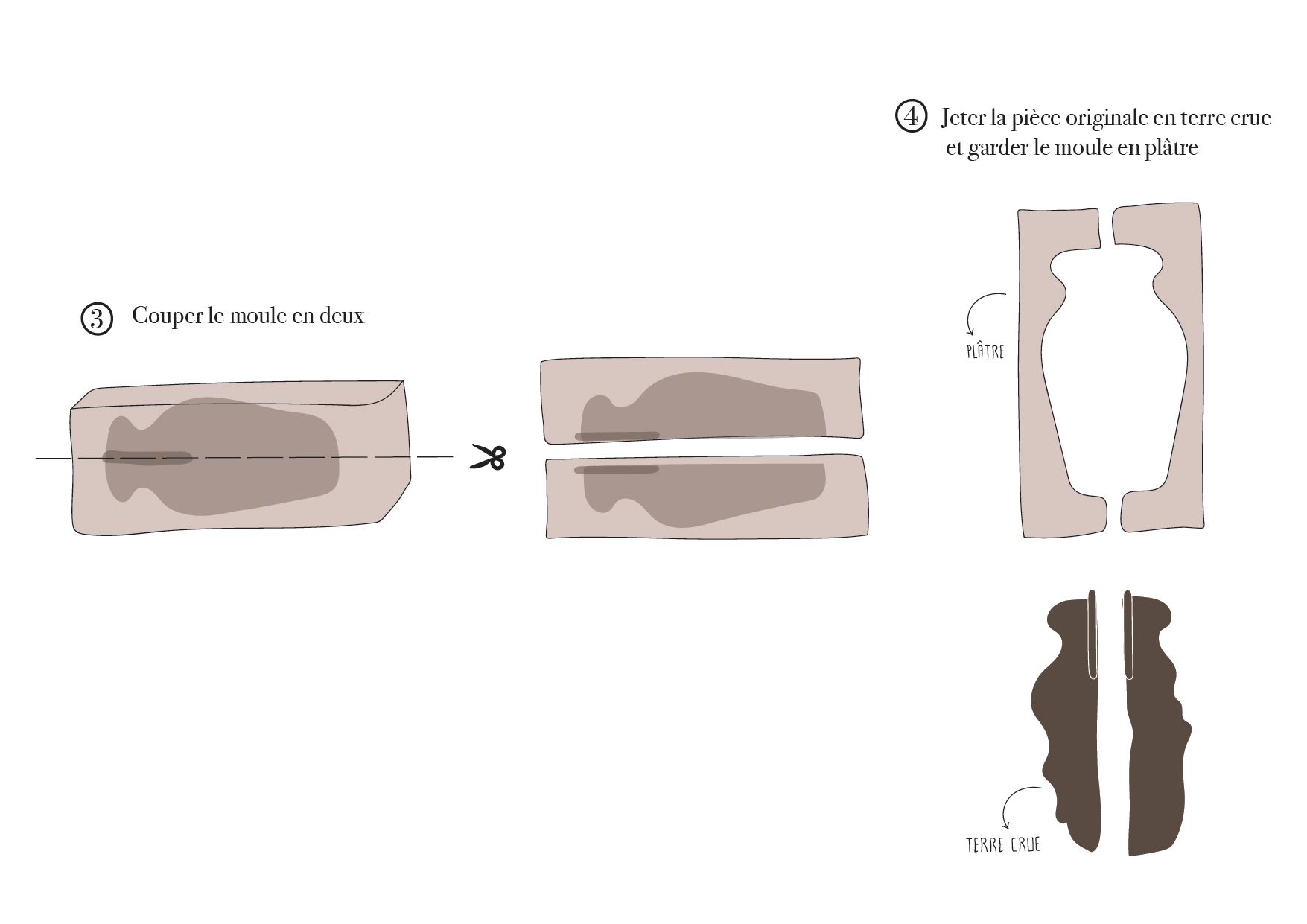
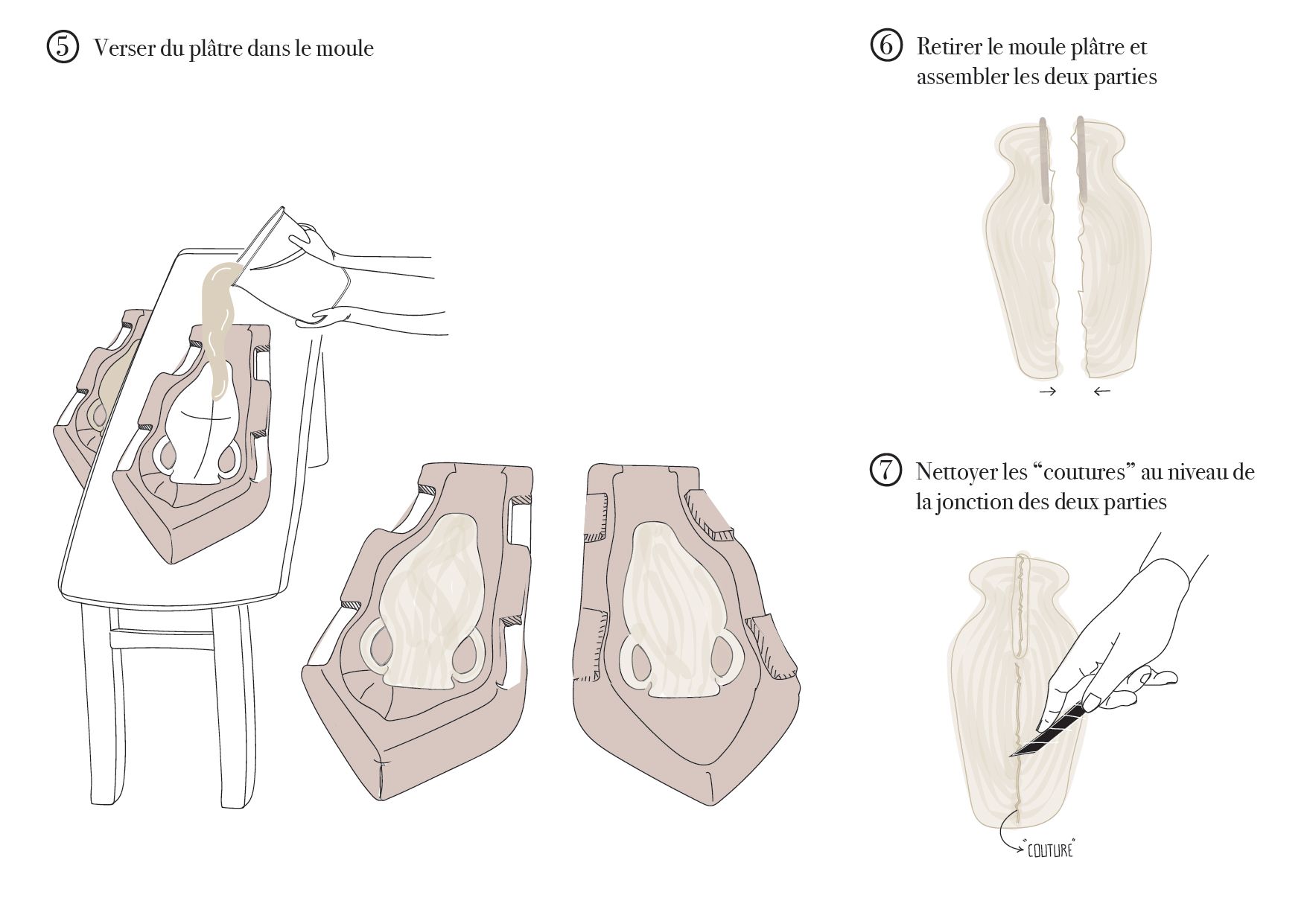

From this model, the moulds are then used to make the actual piece. Each of these moulds has a limited life span of between 15 and 20 uses before losing its precision or porosity. A thin layer of porcelain paste about 5-8mm thick called the crust is placed on one half of the mould, this will capture all the details. The crust is compressed with a sponge and then by hand. In order to give the piece more solidity, some parts are reloaded with balls of paste which will give the final thickness. This is the moment to join the two pieces. The moulder-repairer grooves and coats the joints with slip. Once the mould is closed, he hits it with a leather-cushioned mallet to ensure that the two parts adhere.
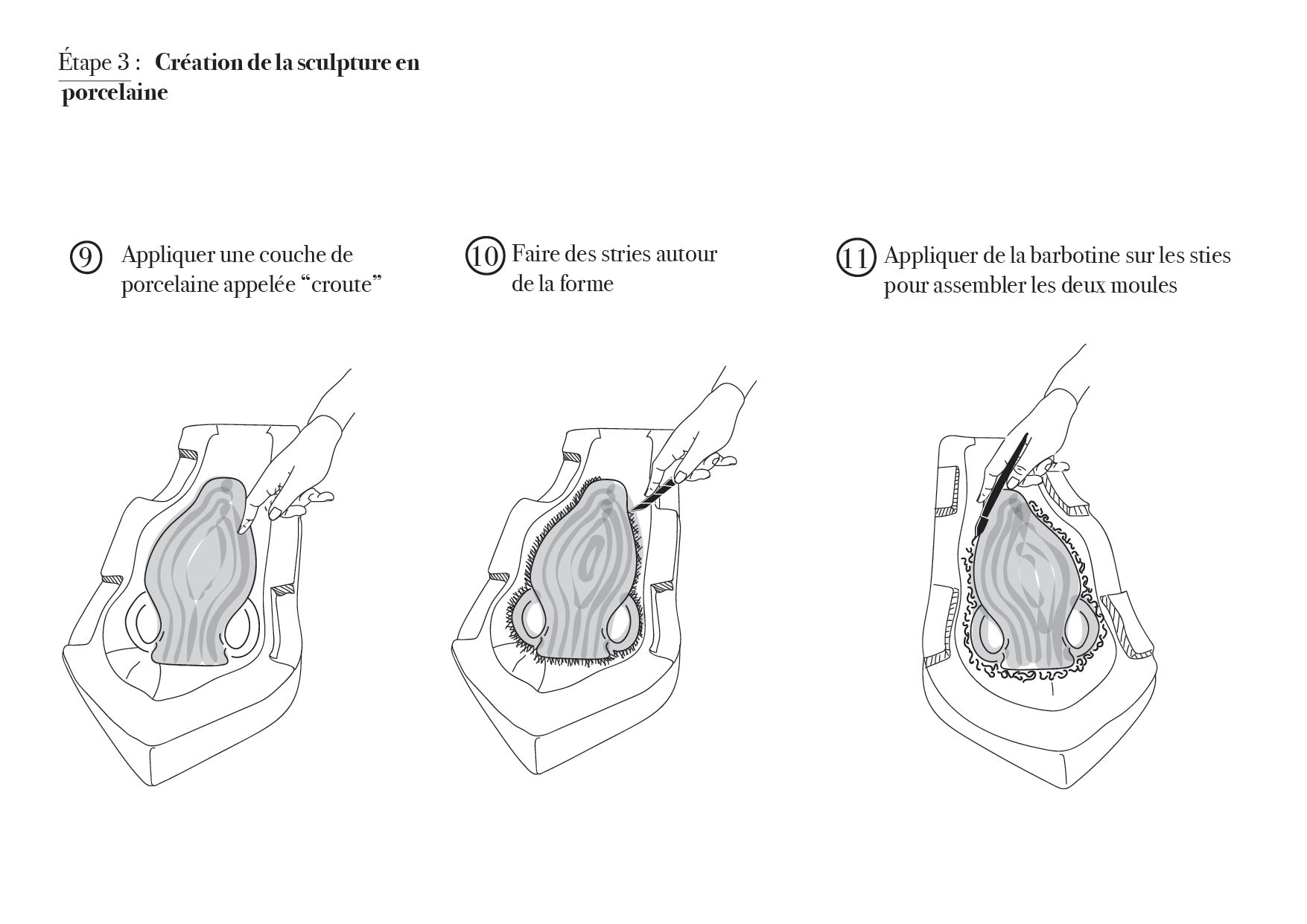
This is where the use of plaster comes in handy. Given its porosity, it absorbs the water contained in the porcelain paste. As a result, the porcelain shrinks and becomes firmer. This allows the piece to be removed from the mold without risk of breakage or loss of material. The resulting pieces are then stored in a damp box before being assembled and retouched. At this stage, the craftsman creates small decorations, such as flowers or foliage, by pastillage. He uses small porcelain pellets that he sculpts by hand to create decorative elements.
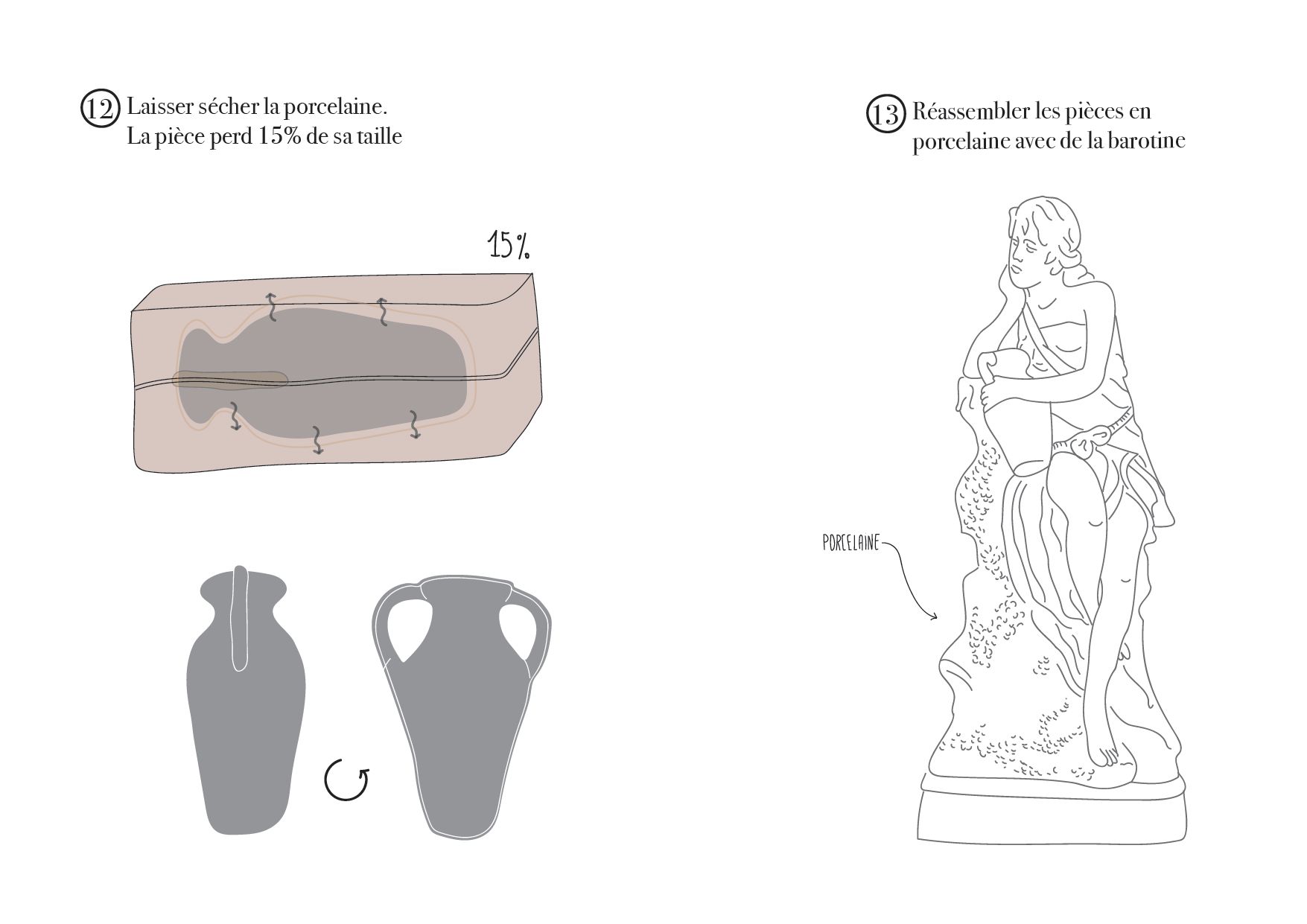
The firing will take place several weeks later to allow the piece to dry. The craftsman will then place wedges to avoid deformations in the kiln. In the 18th century, round brick kilns were used, fuelled by wood. Today, gas-fired kilns are used. The heat of the kiln rises gradually and it could take up to a week to reach the maximum temperature of between 1245°C and 1400°C. Today, the time is closer to 24 hours. This slow rise avoids the explosion of the bisques that can occur with temperature shocks.
Once the piece has been fired, the work is not finished. The molder-repairer has to remove seams and touch up any lost details, using the plaster model as a reference. This operation is called reparage, hence the craftsman's name. His sculptural work makes each piece unique, despite the molding process, since the craftsman works the material himself. The quality of the final object depends enormously on the care taken by the molder. Finally, he polishes the finished piece with a hard stone to give it its full lustre.
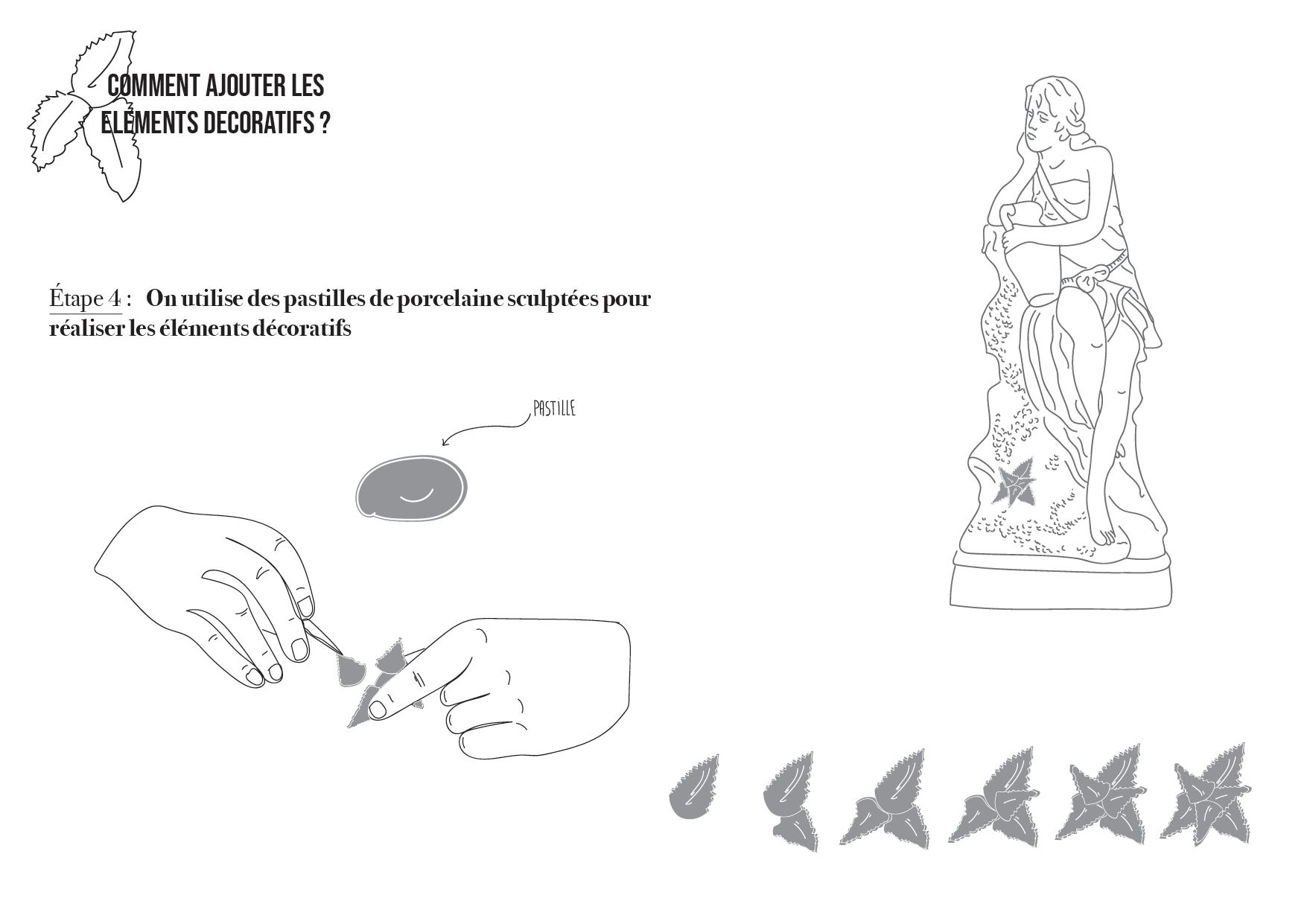 Conclusion
Conclusion
The bisque work is long and meticulous. A single bisque figure representing a single character takes about 9 months of work. Groups can take up to a year. The pieces we have today are witnesses of the great precision of the factories all over the world during the centuries when the bisque was produced. To decorate your home with a bisque is to have an exceptional object that reflects a long history of European craftsmanship. Between economic competition and the search for beauty, the porcelain bisque has given us a lot to see.


